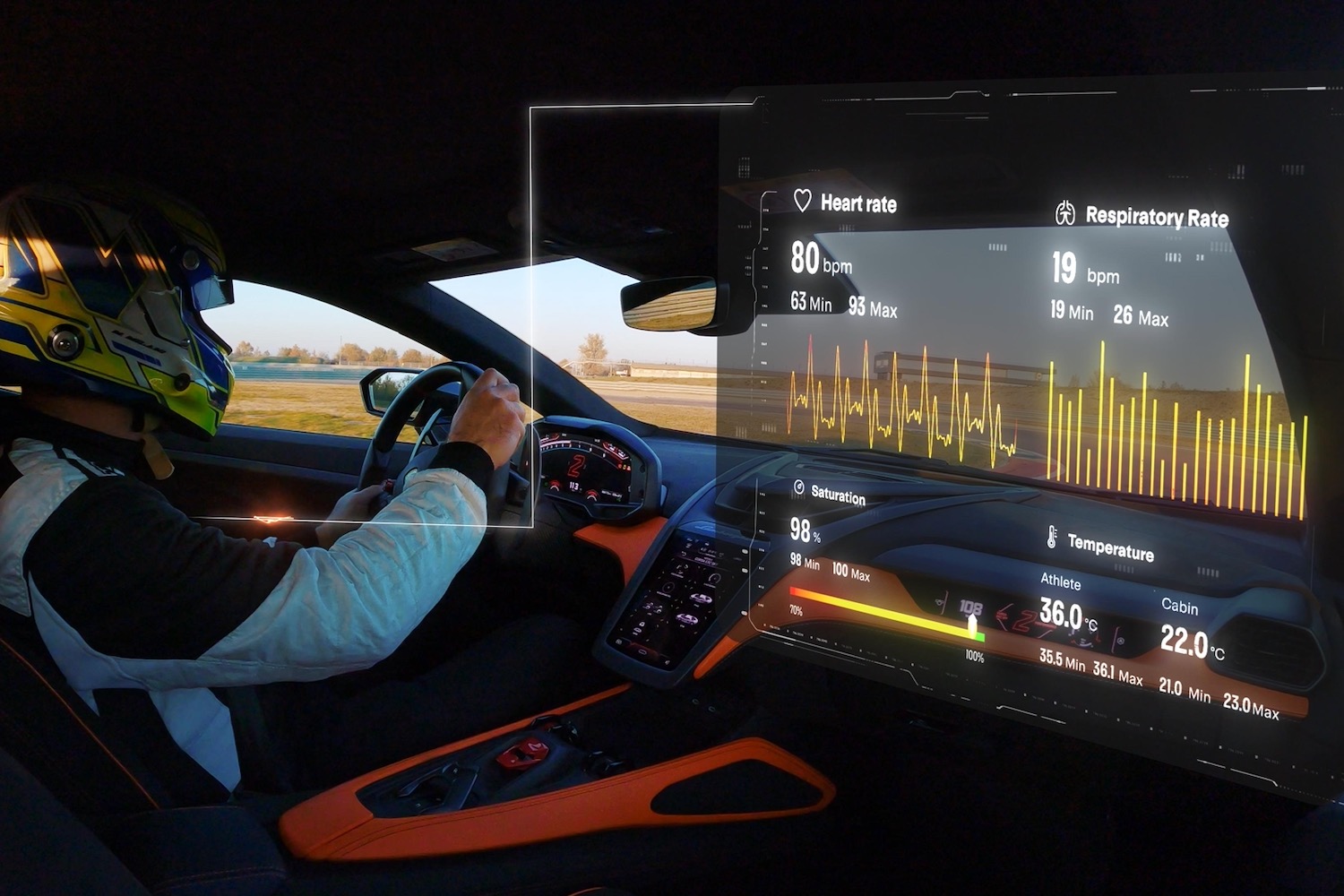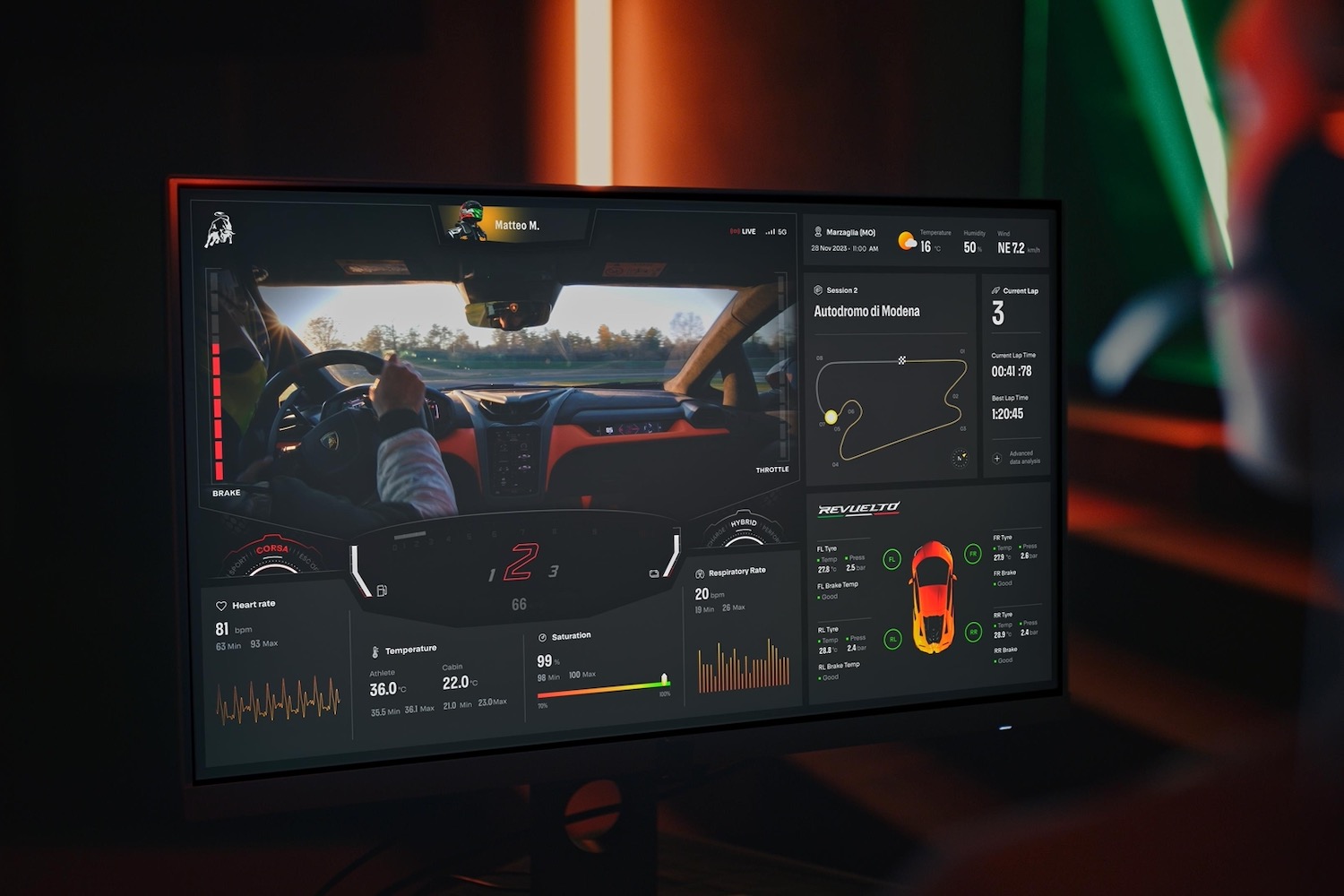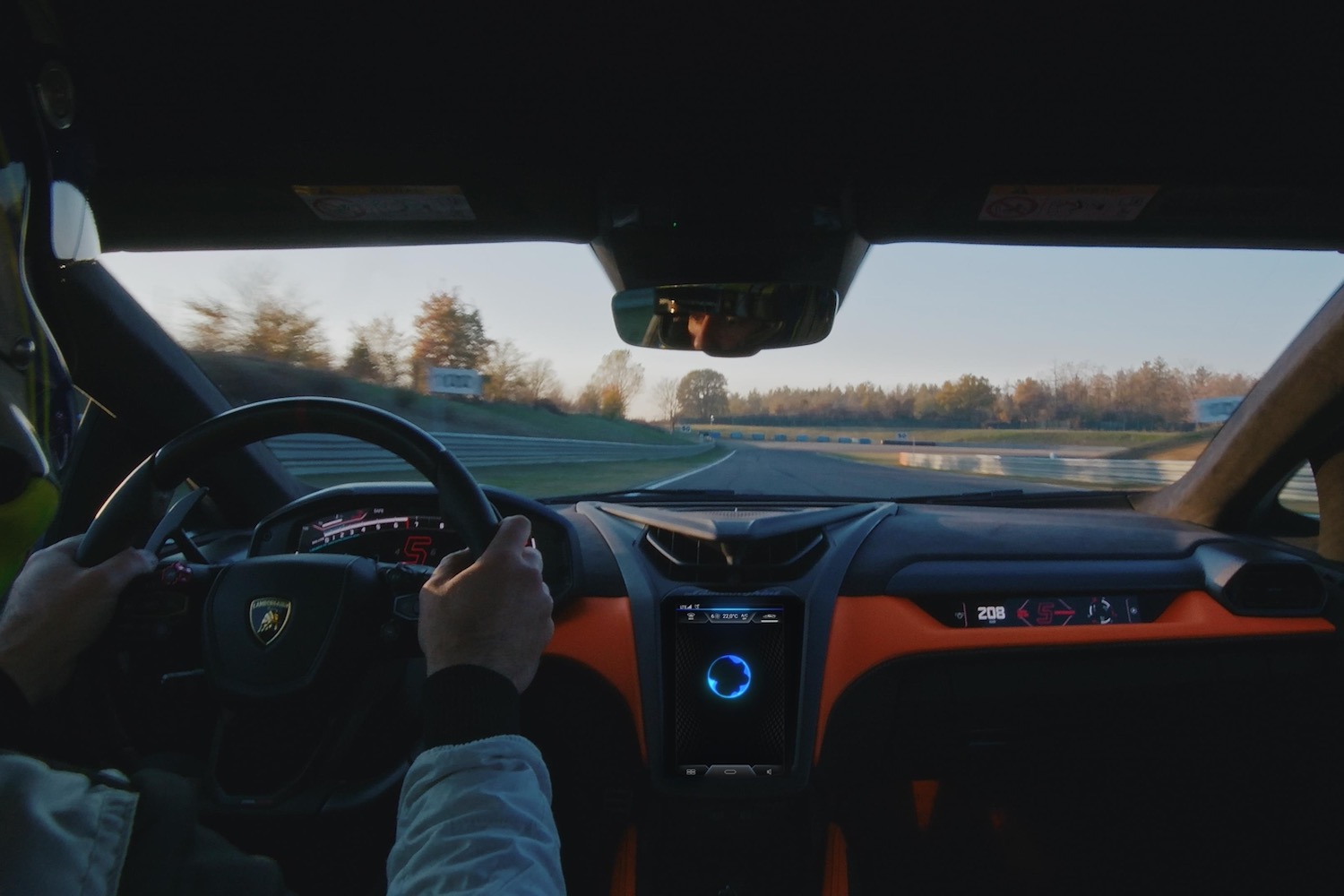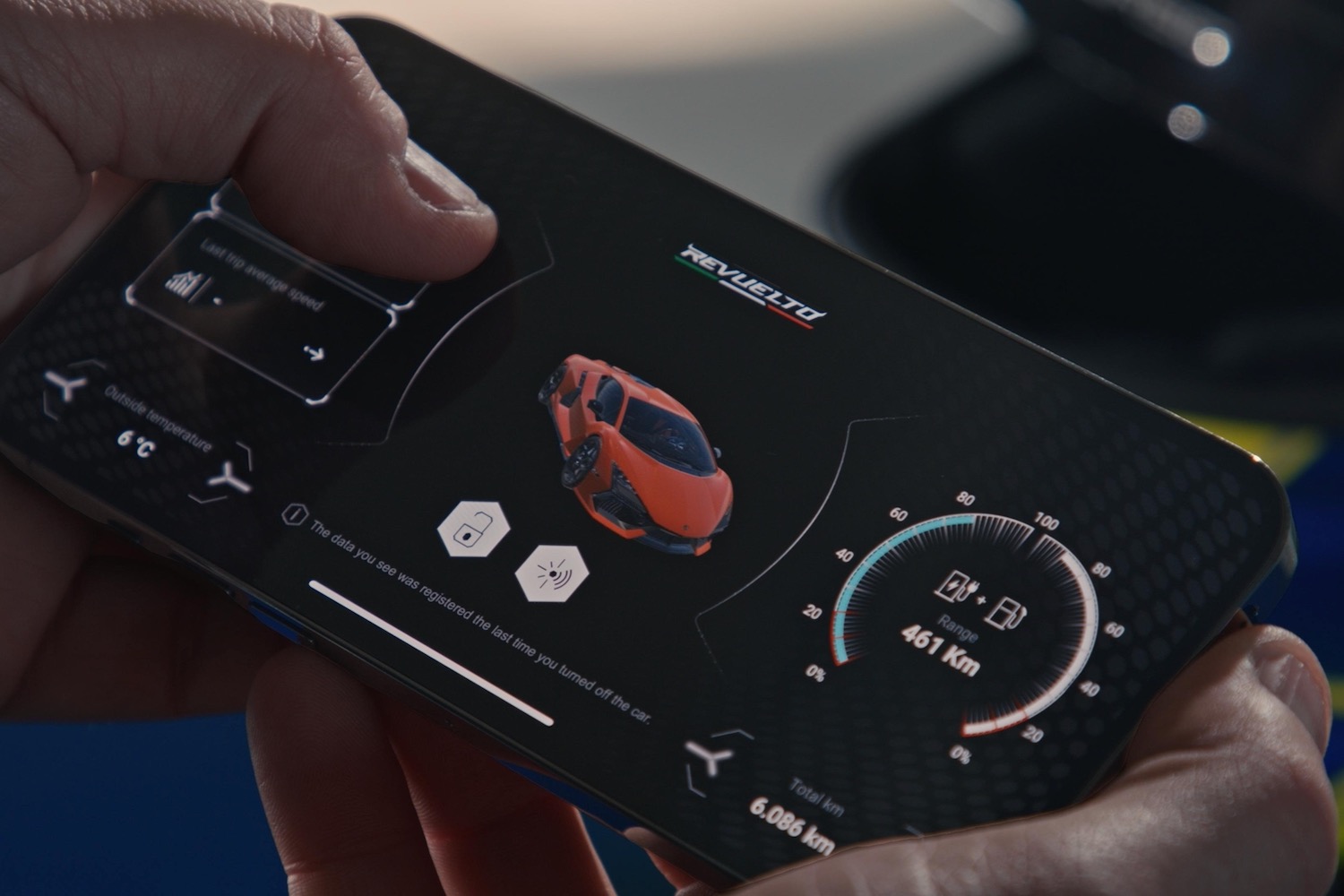

If you have a fast car, the only place to let it loose is a racetrack. And because being able to buy a fast car doesn’t automatically imbue you with the driving skills to get the most out of it, you’ll probably need some coaching as well. At CES 2024, Lamborghini unveiled a high-tech take on driver coaching that uses vehicle data to improve driver’s skills. Called Telemetry X, the system is just a prototype for now, but could be applied to future Lamborghini supercars.
“In the near future, our supercars will offer not just thrills, but truly immersive driving experiences,” Lamborghini CEO Stephan Winkelmann said in a statement. “Telemetry X is a perfect preview of the connected services our customers will be able to experience in the coming years.”
Data-gathering systems are important tools for making racing drivers and their cars faster, and more simplified versions have already begun appearing in road cars. General Motors’ Performance Data Recorder can capture data traces, lap times, and even video. And Lamborghini debuted its own system in 2020 on the Huracán STO. But Telemetry X takes things further.
The Remote Garage feature uses a 5G connection to stream video and data from the car, allowing drivers to get live feedback from a coach. That means they not only don’t have to be in the car, they can be anywhere in the world. Data from the car is combined with biometric sensors that can monitor things like heart rate and stress level to look for other areas to improve beyond driving technique.
Telemetry X also includes a “digital co-pilot” voice assistant that can analyze vehicle data and biometric data to give live feedback such as pointers on where to brake or what line to take through a corner, as well as notifications on vehicle performance.
Lamborghini tested Telemetry X on the Revuelto, the automaker’s new flagship plug-in hybrid supercar, so perhaps we’ll see it become an available feature for that model in the future. Or maybe Lamborghini will use this tech to give its first EV, previewed by the Lanzador concept first shown in 2023, an added wow factor. Stay tuned.







